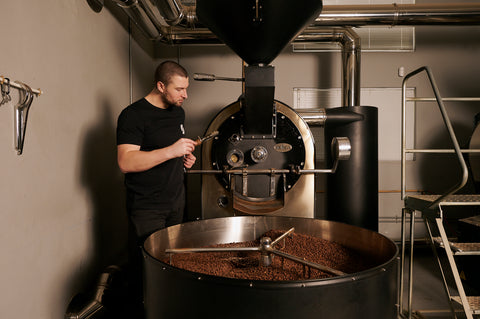
Coffee has become more than just a beverage—it's a daily ritual, a source of comfort, and fuel for productivity, but lately, you may have noticed that your favourite cup is costing a bit more. From your local café to the bags of beans at the grocery store, coffee prices are climbing, and it’s not just inflation at play.
Below, we explore the key factors driving the rising costs of coffee and what it means for both consumers and the coffee industry at large:
Climate Change Is Disrupting Coffee Production
One of the most significant factors behind rising coffee prices is climate change. Coffee is an extremely climate-sensitive crop that grows best in specific temperature ranges.
Increasing temperatures, erratic rainfall, and more frequent extreme weather events (like droughts and frosts) are reducing crop yields in major coffee-producing countries like Brazil, Colombia, and Ethiopia.
For example, Brazil, which is responsible for 40% of the world’s coffee supply, suffered severe frosts and droughts in 2021 and 2022, devastating crops and causing a ripple effect in global prices. Furthermore, the Minas Gerais region in Brazil faced unusually heavy rainfall in recent years, fostering pest and disease outbreaks that significantly impacted crop yields.
Rising Costs of Production and Labour
The cost of producing coffee is going up. Farmers are facing higher prices for fertilisers, pesticides, and other agricultural inputs. Labour costs are also increasing, partly due to shortages of workers in key producing regions and the rising global demand for fair wages and better working conditions.
While these changes can lead to better livelihoods for workers, which is very important, they also translate into higher prices for every step of the supply chain, from the farm to your coffee cup.
Supply Chain Disruptions
The COVID-19 pandemic exposed vulnerabilities in global supply chains, and coffee hasn’t been spared. Shipping delays, container shortages, and port congestion have increased the cost and time needed to transport coffee from origin countries to roasters and retailers.
Even as the pandemic’s acute impacts have faded, supply chain challenges persist, with geopolitical tensions and fuel price volatility continuing to add pressure.
Increased Demand in Emerging Markets
Global demand for coffee is rising, especially in emerging markets like China, India, and parts of Southeast Asia, where coffee culture is rapidly growing. This increased demand from these densely populated countries, combined with supply-side constraints, contributes to higher prices globally.
The Push for Sustainability and Quality
More consumers are now willing to pay for sustainably sourced, ethically produced coffee. Certifications like Fair Trade, Rainforest Alliance, and organic labels often come with higher costs for producers, which are passed down the chain. At the same time, demand for specialty coffee, known for its superior quality and traceability, has grown, further pushing up average coffee prices.
The Final Sip
Experts predict that coffee prices are unlikely to ease in the near future. Nestlé’s regional business executive officer, Carl Khoury, warns that coffee prices could climb by another 30% to 40% next year, attributing this to reduced crop yields in major coffee-producing regions and ongoing logistical challenges.
The rising cost of coffee is a complex issue driven by environmental, economic, and social factors — it's not your local roaster or café owner who is deciding to hike prices to pay for a vacation! While it may mean paying a bit more for your morning brew, it’s also an opportunity to rethink how we value this globally beloved drink and the people who make it possible.
After all, coffee is not just a product; it’s a labour of love grown on the hillsides of countries around the world, roasted with respect for the bean and prepared with care. Paying a fair price helps secure its future, one cup at a time!
